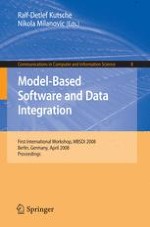2008 | Buch
Model-Based Software and Data Integration
First International Workshop, MBSDI 2008, Berlin, Germany, April 1-3, 2008. Proceedings
herausgegeben von: Ralf-Detlef Kutsche, Nikola Milanovic
Verlag: Springer Berlin Heidelberg
Buchreihe : Communications in Computer and Information Science
